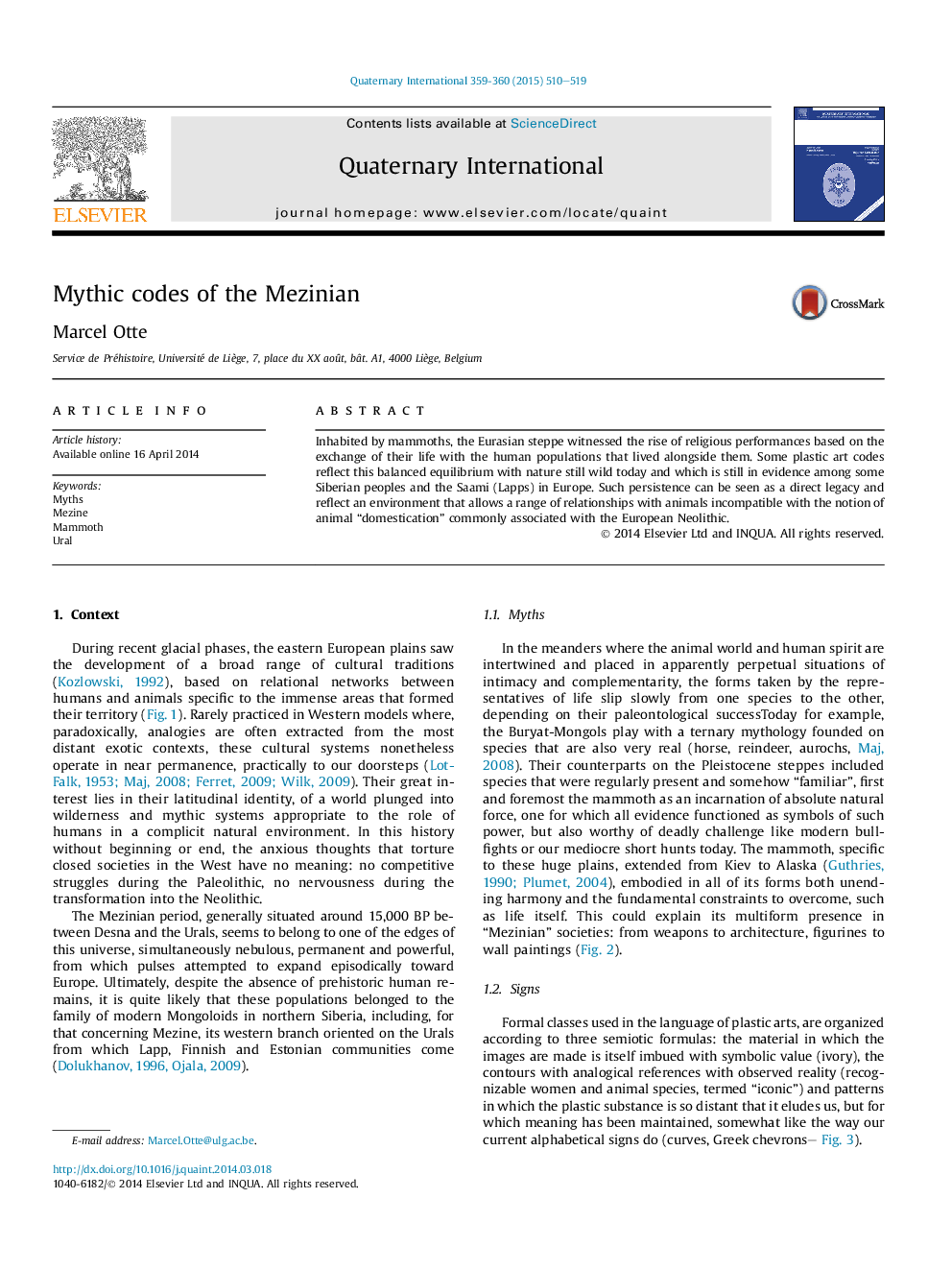| Article ID | Journal | Published Year | Pages | File Type |
|---|---|---|---|---|
| 1041003 | Quaternary International | 2015 | 10 Pages |
Abstract
Inhabited by mammoths, the Eurasian steppe witnessed the rise of religious performances based on the exchange of their life with the human populations that lived alongside them. Some plastic art codes reflect this balanced equilibrium with nature still wild today and which is still in evidence among some Siberian peoples and the Saami (Lapps) in Europe. Such persistence can be seen as a direct legacy and reflect an environment that allows a range of relationships with animals incompatible with the notion of animal “domestication” commonly associated with the European Neolithic.
Related Topics
Physical Sciences and Engineering
Earth and Planetary Sciences
Geology
Authors
Marcel Otte,
